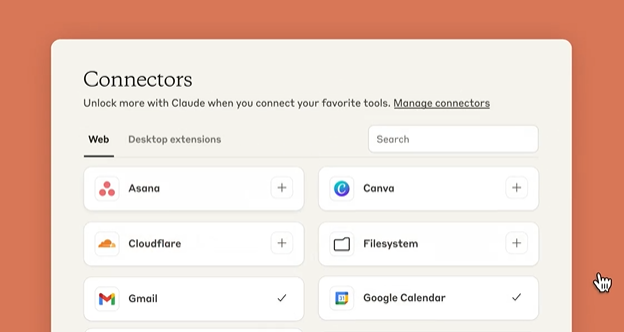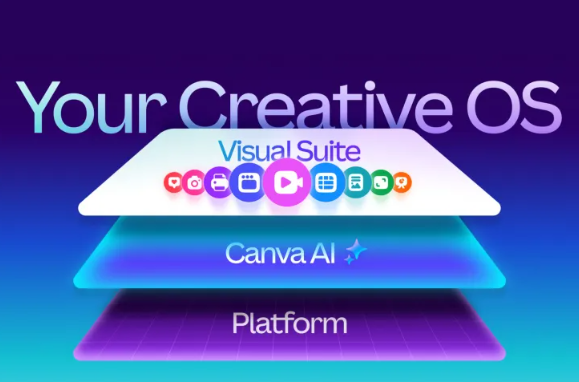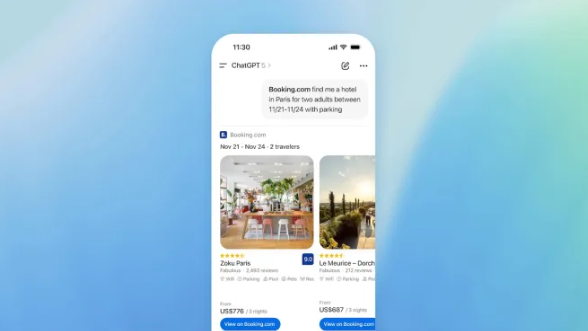Recently, the design platform Canva and Claude AI, a subsidiary of Anthropic, announced a major collaboration: Claude is now integrated with Canva, allowing users to create, edit, and manage Canva designs directly within the Claude chat interface. This breakthrough integration significantly enhances design efficiency through natural language interaction, offering a new experience for content creators, marketers, and designers.

Seamless Integration: Claude as a Design Assistant
Through the integration of Canva and Claude AI, users can complete design tasks using natural language instructions without switching between multiple applications. Whether creating posters, editing social media content, or producing professional presentations, users simply describe their needs in the Claude chat window, and the AI will generate or adjust the design directly in Canva. This feature relies on the Model Context Protocol (MCP), developed by Anthropic, to securely connect Claude with the Canva ecosystem, providing users with a smooth AI-driven design experience.
Key Features: From Brainstorming to Final Product
The integration of Claude and Canva brings several practical features that greatly enhance creative productivity:
- Instant Design Generation: Users can directly create Canva designs through text prompts in Claude. For example, typing "Design a poster for a product launch" will allow Claude to generate visual content that aligns with the brand's style.
- Intelligent Editing and Search: Claude can search existing designs, documents, or templates in the user's Canva workspace and edit or automatically fill in brand templates as needed.
- Content Summary: Claude can quickly analyze documents or presentations in Canva and generate concise summaries, helping users efficiently organize information.
- Multi-Scenario Applicability: This integration applies to various scenarios, from social media posts to corporate presentations, significantly simplifying the design process for marketers, entrepreneurs, and remote teams.
MCP Protocol: The Bridge Between AI and Applications
The core of this integration lies in the Model Context Protocol (MCP) introduced by Anthropic, an open-source framework designed to enable seamless connections between AI models and third-party applications. In addition to Canva, Claude also supports platforms like Notion, Figma, and Stripe through MCP, further expanding its potential as a cross-platform productivity assistant. A Canva ecosystem representative stated: "Users can now complete continuous workflows from idea generation to design publication in Claude, without manually switching applications."
It is worth noting that this feature is currently available only to paid users of Canva and Claude, with specific feature permissions depending on the user's Canva subscription level (Canva Pro is recommended) and Claude subscription plan (minimum around $15/month and $17/month).
Industry Trends: Intensifying Competition in AI Design Tools
The collaboration between Canva and Claude AI is not the first integration of AI and design tools. Previously, ChatGPT had already achieved similar integration with Canva. However, Claude has a competitive advantage in cross-platform integration due to the standardization and scalability of the MCP protocol. Anthropic has also launched an integration directory, allowing users to explore compatible applications with Claude with one click, covering tools such as Figma and Notion, demonstrating its ambition to build an AI productivity ecosystem.
AIbase observes that as AI tools like ChatGPT and Gemini continue to roll out similar integrations, competition in the AI-assisted design field is intensifying. The collaboration between Claude and Canva, through the innovation of the MCP protocol, offers users a more efficient and unified experience, marking the transition of AI from a single chat tool to a full-stack productivity platform.
The Perfect Fusion of Design and AI
The integration of Canva and Claude AI opens up new ways for users to create, transforming design from tedious manual operations into intelligent natural language interactions. AIbase believes that this feature not only improves design efficiency but also lowers the barrier to entry for non-professional designers, truly realizing the vision of "everyone can design." In the future, as the MCP protocol becomes more widely adopted, Claude is expected to become a central hub connecting creativity and productivity.
Conclusion
The deep integration of Canva and Claude AI marks a new starting point for AI-driven design. Whether it's quickly generating brand content or optimizing team collaboration, this feature brings unprecedented convenience to users.










